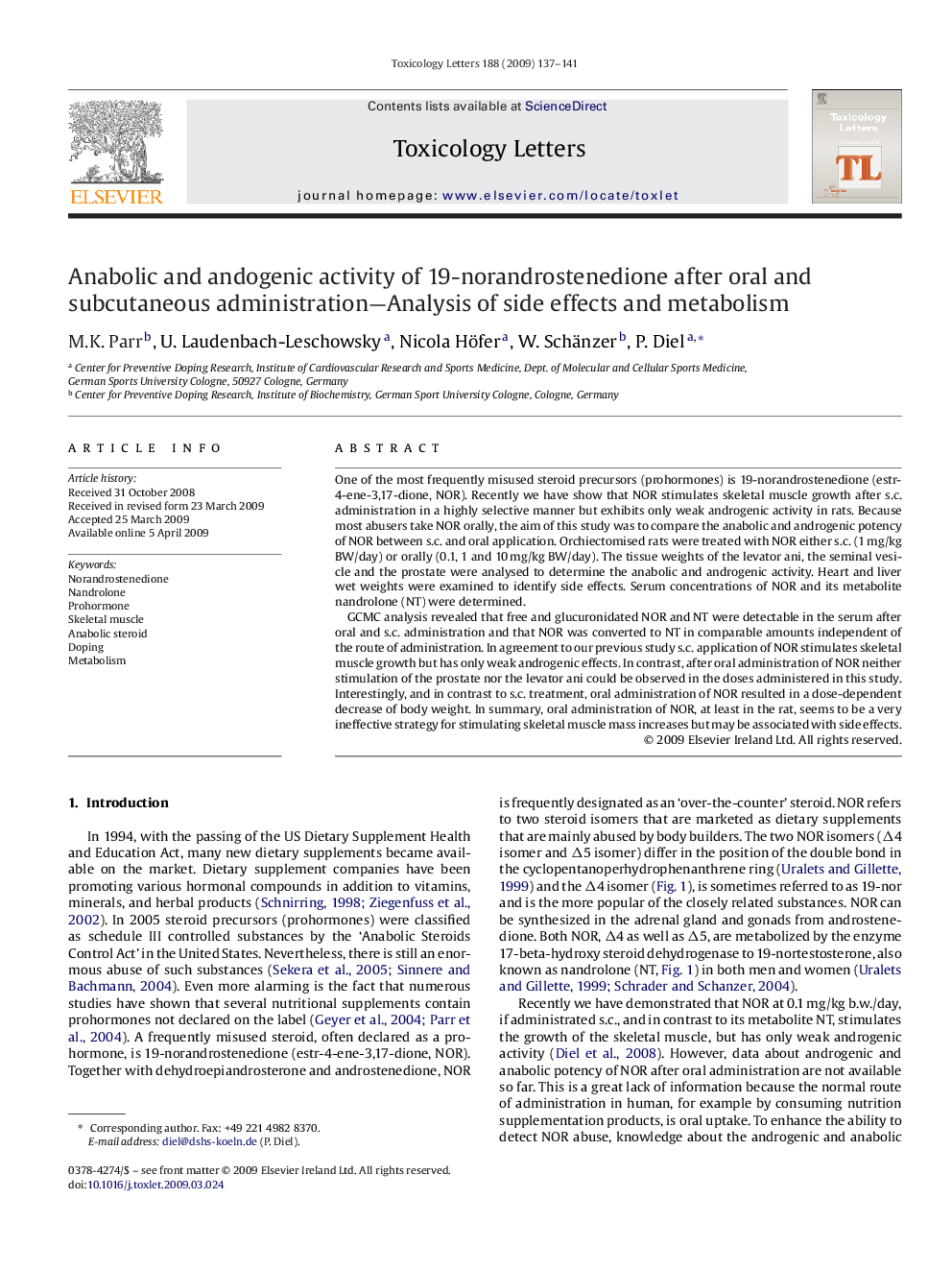| Article ID | Journal | Published Year | Pages | File Type |
|---|---|---|---|---|
| 2600997 | Toxicology Letters | 2009 | 5 Pages |
One of the most frequently misused steroid precursors (prohormones) is 19-norandrostenedione (estr-4-ene-3,17-dione, NOR). Recently we have show that NOR stimulates skeletal muscle growth after s.c. administration in a highly selective manner but exhibits only weak androgenic activity in rats. Because most abusers take NOR orally, the aim of this study was to compare the anabolic and androgenic potency of NOR between s.c. and oral application. Orchiectomised rats were treated with NOR either s.c. (1 mg/kg BW/day) or orally (0.1, 1 and 10 mg/kg BW/day). The tissue weights of the levator ani, the seminal vesicle and the prostate were analysed to determine the anabolic and androgenic activity. Heart and liver wet weights were examined to identify side effects. Serum concentrations of NOR and its metabolite nandrolone (NT) were determined.GCMC analysis revealed that free and glucuronidated NOR and NT were detectable in the serum after oral and s.c. administration and that NOR was converted to NT in comparable amounts independent of the route of administration. In agreement to our previous study s.c. application of NOR stimulates skeletal muscle growth but has only weak androgenic effects. In contrast, after oral administration of NOR neither stimulation of the prostate nor the levator ani could be observed in the doses administered in this study. Interestingly, and in contrast to s.c. treatment, oral administration of NOR resulted in a dose-dependent decrease of body weight. In summary, oral administration of NOR, at least in the rat, seems to be a very ineffective strategy for stimulating skeletal muscle mass increases but may be associated with side effects.
